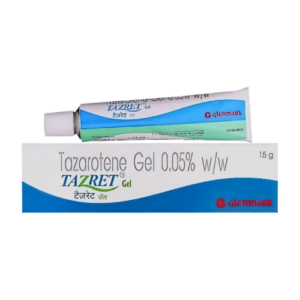ADDICTION
ALCOHOL DEPENDENCE
QUIT SMOKING
ALLERGY
ANTI FUNGAL
FUNGAL INFECTION
FUNGAL NAIL INFECTIONS
ANTI-REJECTION DRUGS
ANTI WORM
ANTIBIOTIC
BACTERIAL INFECTIONS
ARTHRITIS
GOUT
OSTEOARTHRITIS
RHEUMATOID ARTHRITIS
BLOOD
LOW PLATELET COUNT
THROMBOPHLEBITIS
VARICOSE VEINS
COLON
ANAL FISSURE
PILES
ULCERATIVE COLITIS
DIABETES CARE
DIABETES INSIPIDUS
DIABETES TYPE
DIABETIC FOOT ULCERS
GLUCOSE MONITOR
EYES/EAR CARE
DRY EYES
EYE CARE
EYE EXAMINATION
EYE INFECTION
EYE LASHES
EYE PAIN
GLAUCOMA
OCULAR HYPERTENSION
UVEITIS
FEVER CARE
MALARIA
RHEUMATIC FEVER
TYPHOID FEVER
GASTROINTESTINAL
ACIDITY
CONSTIPATION
CROHN'S DISEASE
DIARRHOEA
GALLBLADDER STONES
INTESTINAL ULCERS
IRRITABLE BOWEL SYNDROME
MOTION SICKNESS
NAUSEA
Pasitrex Ointment 0.005% (Calcipotriol)
| Active Ingredient (Generic Name): | Calcipotriol |
|---|---|
| Indication: | Psoriasis |
| Manufacturer: | Sun Pharmaceutical Industries Ltd |
| Packaging: | 20 gm in one tube |
| Strength: | 0.005% |
From: $31.00
Pasitrex Ointment is a topical treatment for plaque psoriasis, containing calcipotriol. It slows down excessive skin cell growth, reducing thick, scaly plaques and inflammation. By binding to vitamin D receptors, calcipotriol normalizes skin cell growth, reducing dead skin cell buildup. This reduces symptoms like redness, inflammation, and itching, improving skin appearance.
Main Points
Pasitrex Ointment (Calcipotriol) is a treatment for psoriasis that slows down excessive skin cell growth, reducing thick, scaly plaques and inflammation.
The active ingredient, calcipotriol, binds to vitamin D receptors, triggering a response that normalizes skin cell growth and reduces dead skin cell buildup.
This medication provides relief from itching, reduces redness and inflammation, and improves skin appearance and feel.
To ensure safe and effective treatment, follow the prescribed dosage, storage, and handling instructions carefully.
If pregnant or breastfeeding, consult a healthcare provider, as Pasitrex Ointment is categorized as Pregnancy Category C.
How Pasitrex Ointment Works
Pasitrex ointment works by slowing down the excessive production of skin cells, a hallmark of psoriasis. This reduces the thick, scaly plaques characteristic of the condition. As a vitamin D analogue, Pasitrex ointment binds to vitamin D receptors in skin cells, triggering a response that normalizes skin cell growth and differentiation. This restores a healthy balance to the skin’s natural cell turnover process. By slowing down skin cell proliferation, Pasitrex ointment reduces the buildup of dead skin cells that can lead to psoriatic lesions. Regular application can help manage psoriasis symptoms and improve skin appearance.
Benefits of Calcipotriol Treatment
Calcipotriol treatment slows down skin cell growth, reducing scaling and inflammation associated with psoriasis. This leads to decreased redness, thickness, and scaliness of psoriatic lesions.
Calcipotriol enhances skin cell differentiation, resulting in a more normal skin cell lifecycle. This reduces the buildup of dead skin cells, which can exacerbate psoriasis symptoms. Calcipotriol also has anti-inflammatory properties, reducing inflammation that contributes to psoriasis.
Plaque Psoriasis Symptoms Alleviated
Pasitrex Ointment helps alleviate plaque psoriasis symptoms. With regular use, redness and inflammation decrease, leading to healthier-looking skin. Scaly skin, itching, and discomfort also diminish, enabling users to regain control over daily life.
Redness and Inflammation
Calcipotriol, the active ingredient in Pasitrex ointment, reduces redness and inflammation associated with plaque psoriasis by inhibiting inflammatory molecule production. When applied to affected areas, calcipotriol blocks the action of these molecules, contributing to the red, inflamed appearance of psoriatic lesions. This results in a decrease in redness and inflammation, leading to reduced discomfort and improved skin appearance.
Calcipotriol also normalizes the keratinocyte cell cycle, which is disrupted in psoriatic skin. This normalization leads to a decrease in psoriatic plaque thickness, further reducing redness and inflammation. By addressing the underlying causes of redness and inflammation, Pasitrex ointment provides a comprehensive solution for managing plaque psoriasis symptoms. With regular use, users can expect improved skin appearance, characterized by reduced redness and inflammation, leading to better overall skin health.
Scaly Skin Reduction
Pasitrex ointment’s active ingredient, calcipotriol, slows down skin cell growth, leading to thinner, less scaly plaques. This decrease in scaling is a key benefit of using Pasitrex ointment to manage plaque psoriasis.
By reducing the rate of skin cell proliferation, calcipotriol helps to normalize skin cell growth, resulting in less flaking and scaling. As skin cells grow at a normal rate, the skin sheds its thick, scaly layers, revealing smoother skin.
Reduced scaling improves the appearance of the skin, making it look more even-toned and less rough to the touch. This reduction in scaling alleviates uncomfortable and embarrassing symptoms associated with plaque psoriasis, leading to an improvement in the overall appearance and feel of the skin.
Pasitrex ointment’s ability to reduce scaling is particularly beneficial for individuals with plaque psoriasis, providing a significant improvement in skin appearance and feel.
Itching Relief
Pasitrex ointment provides relief from intense itching associated with plaque psoriasis. It reduces the urge to scratch, allowing for uninterrupted sleep and improved daily life.
The active ingredient, calcipotriol, slows down skin cell growth, reducing scaly skin buildup. This leads to decreased itching and discomfort.
Applying Pasitrex Ointment Correctly
Apply Pasitrex ointment in a thin layer to affected skin areas, avoiding the face, eyes, and mucous membranes. Ensure your hands are clean and dry before application. Wash your hands thoroughly after application to prevent exposure to sensitive areas.
Use gentle, circular motions to spread the ointment evenly across the affected area. Avoid applying excessive pressure, which can cause skin irritation. For large areas, multiple applications may be necessary to achieve adequate coverage.
Wash your hands again after application to prevent accidental exposure to sensitive areas. Accurate application is crucial for effective treatment outcomes.
Recommended Dosage and Frequency
Recommended Dosage and Frequency
Pasitrex ointment, containing 0.005% calcipotriol, should be applied to affected areas up to twice daily, as directed by a physician. Adhering to the recommended dosage and frequency is crucial for optimal results and minimizing potential side effects.
Application Guidelines:
- Initial Application: Apply a thin layer of ointment to affected areas up to twice daily, as directed by a physician.
- Maintenance Application: Once skin improves, the frequency of application may be reduced to once daily or every other day.
- Maximum Dosage: Do not exceed the recommended 0.005% calcipotriol dosage, as this may increase the risk of adverse effects.
Always follow a physician’s instructions and adjust dosage and frequency as needed based on individual treatment response.
Potential Side Effects and Risks
Pasitrex ointment use may result in side effects, typically mild and temporary, but potentially severe in rare cases. Common side effects include itching, redness, and burning sensations at the application site, as well as skin irritation, dryness, or peeling. Rarely, allergic contact dermatitis or hypersensitivity reactions may occur. Discontinue use and consult a doctor if any of these symptoms arise.
Systemic side effects may occur, particularly in individuals with a history of calcium metabolism disorders. Elevated calcium levels can lead to hypercalcemia, causing symptoms such as nausea, vomiting, and abdominal cramps. Individuals with a history of kidney stones or kidney disease are at higher risk of developing hypercalcemia. Monitor calcium levels and kidney function while using Pasitrex ointment. Consult a doctor or pharmacist for personalized guidance if concerned about potential side effects.
Interactions With Other Medications
When using Pasitrex Ointment, potential interactions with other medications must be considered. Certain combinations can increase the risk of adverse effects or reduce treatment efficacy. Inform your doctor about all medications, supplements, or vitamins currently being used to minimize potential drug interaction risks.
Drug Interactions Risks
Pasitrex Ointment Interactions
Pasitrex ointment may interact with certain medications, increasing the risk of adverse effects. This is due to its active ingredient, calcipotriol, a synthetic derivative of vitamin D that can affect how other medications work in the body.
Medications that may interact with Pasitrex ointment include:
- Topical corticosteroids: Concomitant use can increase the risk of skin thinning and tearing.
- Retinoids: Combining Pasitrex ointment with retinoids, such as tretinoin, can increase the risk of skin irritation.
- Systemic corticosteroids: Concomitant use can increase the risk of adrenal insufficiency and other systemic adverse effects.
To minimize the risk of interactions, it is essential to inform your doctor about all medications, supplements, and vitamins you are taking.
Medication Combination Effects
When using Pasitrex ointment, it is essential to inform your doctor about all medications you are currently taking, including prescription and over-the-counter drugs, vitamins, and supplements. This helps identify potential interactions and ensures safe treatment.
Combining Pasitrex ointment with medications that affect vitamin D levels, such as thiazide diuretics, may increase the risk of hypercalcemia. Similarly, using Pasitrex ointment with medications that affect the skin, such as topical corticosteroids, may increase the risk of skin irritation. Your doctor may need to adjust the dosage or monitor you closely for potential interactions. Follow your doctor’s instructions and attend follow-up appointments to ensure the safe and effective use of Pasitrex ointment.
Pregnant or Breastfeeding Users
As a pregnant or breastfeeding user, it is crucial to understand the implications of using Pasitrex ointment. Calcipotriol, the active ingredient in Pasitrex ointment, has been categorized as Pregnancy Category C. This means that while there is no conclusive evidence of harm, there is also no conclusive evidence of safety.
Pregnant or planning to become pregnant women should consult their doctor before using Pasitrex ointment. Key considerations include:
- Limited human studies on calcipotriol use during pregnancy make it difficult to assess risks.
- Animal studies suggest that calcipotriol can cause fetal harm, raising concerns about its use during pregnancy.
- A doctor must weigh the potential benefits of using Pasitrex ointment against potential risks to the mother and fetus.
An open and informed discussion with a doctor about using Pasitrex ointment during pregnancy or breastfeeding is necessary.
Common Allergic Reactions
When using Pasitrex ointment, be aware of potential allergic reactions. While generally well-tolerated, this medication can cause adverse responses in some individuals.
Common allergic reactions to Pasitrex ointment include skin irritation, redness, or itching at the application site. You may also experience a burning or stinging sensation, particularly if you have open wounds or cuts on your skin.
In rare cases, more severe allergic reactions can occur, such as hives, breathing difficulties, or swelling of the face, lips, tongue, or throat. If you experience any of these symptoms, seek immediate medical attention.
Monitor your body’s reaction to Pasitrex ointment and report any adverse effects to your doctor or pharmacist. They can help determine the best course of action and provide guidance on managing your symptoms. If you have a history of allergies or sensitivities, exercise caution when starting a new medication.
Storage and Disposal Guidelines
Store Pasitrex Ointment in a cool, dry place away from direct sunlight and out of children’s reach. Handle the ointment carefully to prevent contamination and minimize waste. Proper storage and handling ensure the ointment remains effective and safe to use, while also promoting environmentally responsible disposal.
Proper Storage Conditions
Store Pasitrex Ointment in a tightly closed container, protected from light, and keep it out of reach of children. This is crucial to maintain the potency and efficacy of the medication. Room temperature, between 15?C to 30?C (59?F to 86?F), is the optimal storage temperature to prevent degradation.
Avoid exposing the ointment to extreme temperatures, above 40?C (104?F) or below 2?C (36?F). Keep the ointment away from moisture, as it can affect the stability of the active ingredient. Do not store the ointment in a humid environment, such as a bathroom or kitchen, to prevent contamination.
Handling Precautions
Handling Precautions for Pasitrex Ointment
Pasitrex Ointment contains calcipotriol, a hazardous substance that requires careful handling to prevent accidental exposure or spills. Wear protective gloves and eyewear when handling the ointment to prevent skin contact and eye irritation.
In case of accidental spills, clean up immediately with soap and water. Wash hands thoroughly after handling the ointment or cleaning up a spill.
Avoid touching your face, eyes, or mouth when handling Pasitrex Ointment, as calcipotriol can be absorbed through the skin or mucous membranes. If skin irritation or eye exposure occurs, flush the affected area with water. Seek medical attention if irritation persists.
Store Pasitrex Ointment in its original packaging, tightly closed, and out of reach of children and pets. Following these handling precautions minimizes the risks associated with Pasitrex Ointment and promotes safe use.
Disposal Methods
Dispose of used or expired Pasitrex Ointment through a pharmaceutical take-back program or a household hazardous waste collection facility to prevent environmental contamination. Calcipotriol, a potent synthetic derivative of vitamin D in Pasitrex Ointment, can harm aquatic life if released into the environment.
To ensure responsible disposal, follow these guidelines:
- Contact local authorities to find out if they offer pharmaceutical take-back programs or household hazardous waste collection facilities.
- Participate in drug take-back events, where you can drop off used or expired medications, including Pasitrex Ointment, for proper disposal.
- Do not dispose of Pasitrex Ointment by flushing it down the toilet or pouring it down the drain, as this can contaminate waterways and harm aquatic life.
What to Expect During Treatment
During treatment with Pasitrex Ointment, skin may experience temporary stinging or burning sensations, particularly near open wounds or cuts. This sensation is typically mild and short-lived. Redness or itching at the application site may also occur, but should subside within a few days.
As skin adjusts to treatment, improvements in skin condition can be expected. Scaling, inflammation, and skin thickening may decrease. It may take time to see full benefits.
Adhere to recommended dosage and application schedule for best results. If severe or persistent adverse reactions occur, consult a doctor or pharmacist for guidance.
Combining Pasitrex With Other Therapies
When combining Pasitrex Ointment with other therapies, potential interactions must be considered to optimize treatment outcomes.
Combining Pasitrex with other treatments requires careful evaluation of benefits against potential interactions. Your healthcare provider will help navigate these considerations.
Key factors to consider when combining Pasitrex with other therapies include:
- Topical corticosteroids: Co-administration may increase the risk of skin atrophy. Monitor skin for signs of atrophy and adjust the treatment plan accordingly.
- Phototherapy: When combining Pasitrex with phototherapy, exercise caution regarding increased sensitivity to UV light. Wear protective clothing and apply Pasitrex at least 24 hours before light therapy.
- Systemic therapies: When taking systemic therapies (e.g., methotrexate or cyclosporine), closely monitor liver function and adjust the treatment plan as needed.
Monitoring Progress and Follow-ups
Regular monitoring of your skin condition and treatment response is essential for optimizing the therapeutic benefits of Pasitrex Ointment. This involves scheduled follow-ups with your healthcare provider to assess treatment effectiveness and identify potential side effects. During these follow-ups, your healthcare provider will evaluate your skin condition, noting changes in symptoms, lesion size, and skin appearance. They may perform physical examinations, take photographs, or use assessment tools to track your progress.
Be open with your healthcare provider about your treatment experience, including side effects or concerns. This information enables them to make informed decisions about adjusting your treatment plan, such as modifying application frequency, combining Pasitrex Ointment with other therapies, or switching to alternative treatments. Adhering to the recommended follow-up schedule and collaborating with your healthcare provider ensures optimal Pasitrex Ointment treatment outcomes.
Frequently Asked Questions
Can I Use Pasitrex Ointment on My Face or Scalp?
Pasitrex ointment is a topical cream used to treat fungal infections, such as ringworm and athlete’s foot. It contains the active ingredient ciclopirox. The cream is typically applied to affected skin areas, but not to the face or scalp. Using Pasitrex ointment on sensitive areas may cause irritation or adverse reactions. Always follow the instructions and warnings provided with the medication, and consult a doctor or pharmacist before using it on the face or scalp.
Is Pasitrex Ointment Available Over-The-Counter or by Prescription Only?
Pasitrex Ointment is a prescription-strength medication that typically requires a doctor’s prescription. In most countries, it is not available over-the-counter due to its potent active ingredients, which necessitate a doctor’s guidance for safe use.
Can I Stop Using Pasitrex Ointment Once My Symptoms Improve?
Discontinuing Pasitrex Ointment treatment prematurely, when symptoms improve, may lead to relapse. Consult a doctor to determine the appropriate duration of therapy.
How Long Does It Take to See Results From Using Pasitrex Ointment?
Typically, results from using Pasitrex ointment become apparent within 2-4 weeks. Peak efficacy is usually reached around 8-12 weeks, depending on condition severity and individual response.
Will Pasitrex Ointment Stain Clothing or Bedding?
Calcipotriol ointment may not significantly stain fabrics, but it’s essential to allow it to fully absorb into the skin before coming into contact with clothing or bedding to minimize any potential risk of staining.
Conclusion
Effective management of plaque psoriasis symptoms can be achieved by following the guidelines for Pasitrex ointment. Apply the ointment correctly, adhering to the recommended dosage and frequency. Store it properly. Combine it with other therapies as necessary. Monitor progress with regular follow-ups. With consistent use and proper care, significant improvement in skin condition can be expected.





There are no reviews yet.